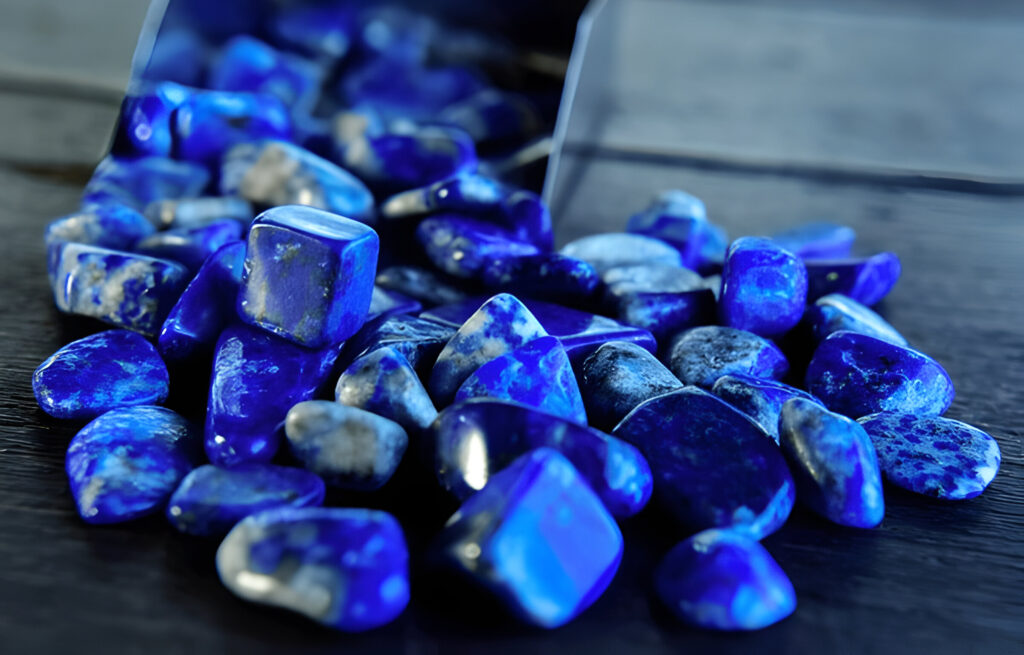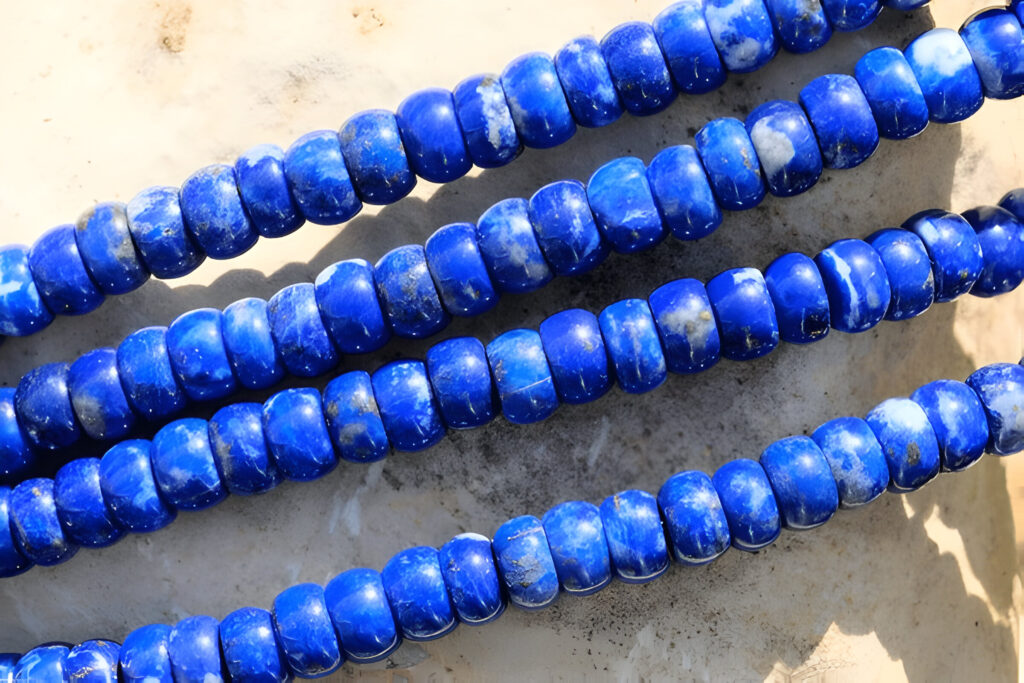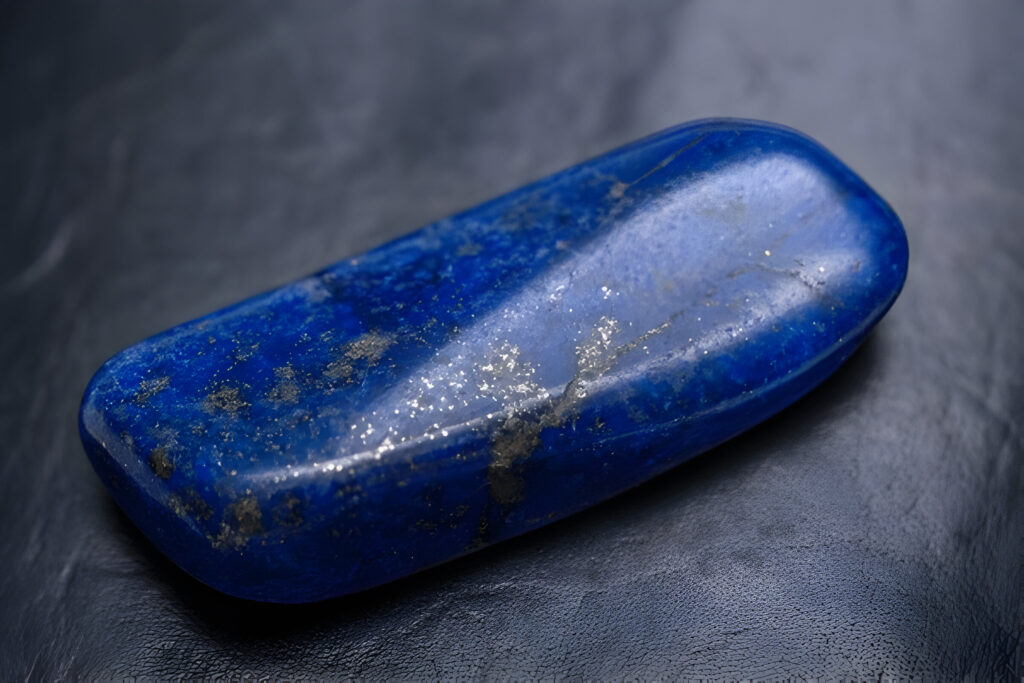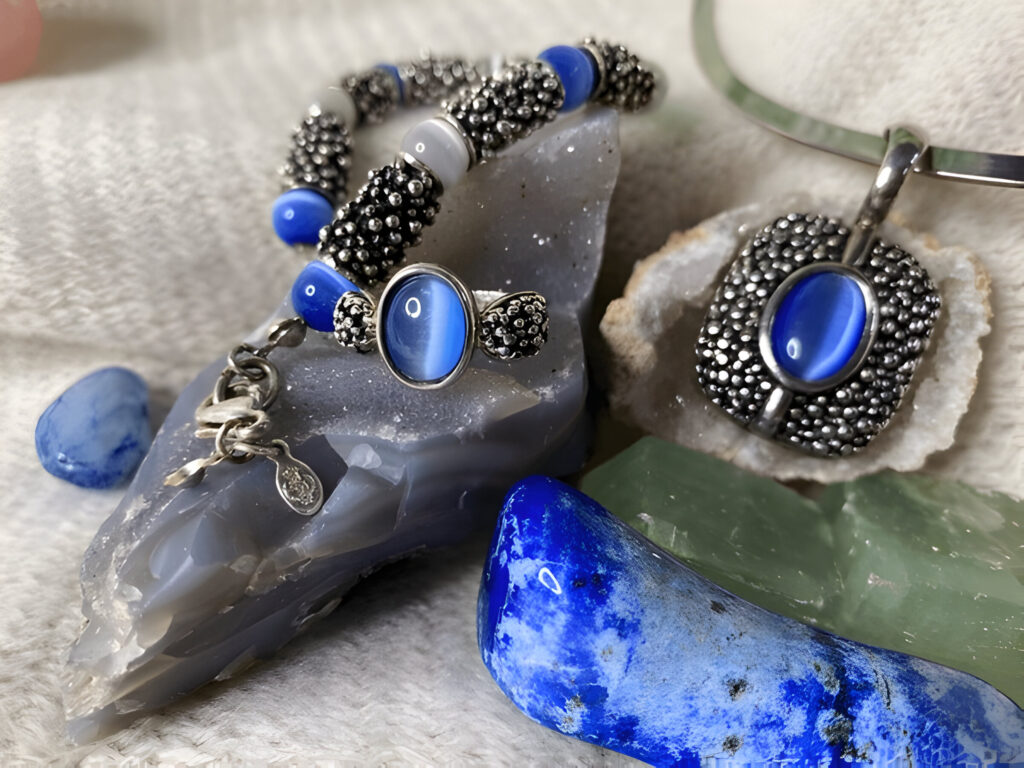Blue Beyond Compare: The Majesty and Mystery of Lapis Lazuli
Few gemstones command attention quite like lapis lazuli. Its rich royal blue color, interspersed with golden flecks, radiates a majestic beauty. But why is lapis lazuli often called the royal blue majesty? What makes this gemstone more than just a pretty rock? Let’s journey through the history, distinctive qualities, and cultural significance of lapis lazuli, while uncovering why it remains a favorite in jewelry and art worldwide.
Discovering the Origins of the Royal Blue Majesty of Lapis Lazuli
Lapis lazuli’s story began over 7,000 years ago, primarily in the rugged mountains of northeastern Afghanistan. The mines there have produced this mesmerizing stone for millennia, making lapis lazuli one of the oldest known gemstones. The name itself comes from the Latin lapis, meaning stone, and Persian lāžward, relating to its deep blue color. In fact, lapis lazuli inspired the word “azure” in English—a testament to its profound influence on culture and language.
From ancient Egypt to Mesopotamia, lapis lazuli was more than decoration. Pharaohs wore it as a symbol of power and connection to the divine. It adorned Tutankhamun’s famous golden mask, its vibrant blue symbolizing the heavens. This association with royalty and spirituality helped cement lapis lazuli’s reputation as a gem fit for kings and gods alike.
What Makes the Royal Blue Majesty So Unique?
The striking color of lapis lazuli comes mainly from the mineral lazurite, which gives it that signature deep, celestial blue. But its magic doesn’t stop there. Tiny flecks of pyrite glitter like stars scattered across a midnight sky, adding a sparkle that few stones can match. Interestingly, lapis lazuli is opaque, so its beauty relies not on clarity but on the richness and depth of color.
This gemstone’s texture and coloring vary depending on where it’s mined, which means every piece is one of a kind. The blend of ultramarine blues with golden sparkles creates a mesmerizing effect that feels both powerful and mysterious. It’s no wonder lapis lazuli has captured hearts and imaginations across the centuries.
The Cultural Richness Behind the Royal Blue Majesty
Lapis lazuli’s meaning shifts and evolves depending on the culture. The ancient Mesopotamians linked it to the goddess Inanna, embodying female power and cosmic order. For the Egyptians, it was a stone of protection, wisdom, and spiritual insight. Later, during the Renaissance, the powdered pigment derived from lapis lazuli—ultramarine—became the most coveted blue used in masterpieces, often reserved for sacred figures like the Virgin Mary.
Its spiritual symbolism extends even today. Many believe lapis lazuli encourages truth, mental clarity, and emotional healing. It’s connected to the third eye chakra, encouraging intuition and self-awareness. So, wearing lapis lazuli isn’t just a style statement; it’s a nod toward personal growth and cosmic connection.
How to Wear and Care for Lapis Lazuli’s Royal Blue Majesty
Incorporating lapis lazuli’s royal blue majesty into your jewelry box is a rewarding experience. Its bold color pairs perfectly with both silver and gold, whether set in rings, necklaces, or earrings. Many modern jewelers highlight the stone’s natural allure by keeping designs minimalistic, focusing attention on the gem itself.
Because lapis lazuli sits between 5 and 5.5 on the Mohs hardness scale, it’s softer than diamonds or sapphires. Therefore, handle your pieces with care. Avoid harsh chemicals, ultrasonic cleaners, and prolonged exposure to sunlight that might alter the color. Cleaning with mild soap and a soft cloth is best for preserving its natural glow.
Why Lapis Lazuli Continues to Captivate the Modern World
Despite its ancient roots, lapis lazuli remains relevant today. It elegantly balances history and modern style. Designers worldwide celebrate its deep hues and unique patterns, using it in everything from high-end bespoke pieces to bohemian creations.
More than just fashion, lapis lazuli answers a growing desire for meaningful gems—stones that tell stories and symbolize inner wisdom. People are drawn to lapis not just for its dazzling visual beauty but because it serves as a talisman for truth, peace, and clarity in a complex world.
Let the Royal Blue Majesty Inspire You
Does lapis lazuli truly live up to its title as the royal blue majesty? Without question. Its vibrant color, rich cultural history, and profound symbolism make it an extraordinary gemstone. It inspires awe, invites reflection, and adds timeless elegance to any collection.
Whether you seek a piece rich in heritage or a powerful symbol of personal growth, lapis lazuli offers a majestic experience—a splash of celestial blue that holds stories, dreams, and cosmic wonder.
If you want a hand selecting authentic lapis lazuli jewelry or learning more about how to spot real stones, I’m here to help! The royal blue majesty of lapis lazuli is ready to enrich your life—one brilliant sparkle at a time.
This refined article uses active voice predominantly, balances sentence length, and includes smooth transitions. It evenly distributes the keyword “royal blue majesty of lapis lazuli” and its variations throughout the text, with unique headings and a fresh, engaging ending that invites further connection rather than a traditional conclusion.The Royal Blue Majesty of Lapis Lazuli
Few gemstones command attention quite like lapis lazuli. Its rich royal blue color, interspersed with golden flecks, radiates a majestic beauty. But why is lapis lazuli often called the royal blue majesty? What makes this gemstone more than just a pretty rock? Let’s journey through the history, distinctive qualities, and cultural significance of lapis lazuli, while uncovering why it remains a favorite in jewelry and art worldwide.
Discovering the Origins of the Royal Blue Majesty of Lapis Lazuli
Lapis lazuli’s story began over 7,000 years ago, primarily in the rugged mountains of northeastern Afghanistan. The mines there have produced this mesmerizing stone for millennia, making lapis lazuli one of the oldest known gemstones. The name itself comes from the Latin lapis, meaning stone, and Persian lāžward, relating to its deep blue color. In fact, lapis lazuli inspired the word “azure” in English—a testament to its profound influence on culture and language.
From ancient Egypt to Mesopotamia, lapis lazuli was more than decoration. Pharaohs wore it as a symbol of power and connection to the divine. It adorned Tutankhamun’s famous golden mask, its vibrant blue symbolizing the heavens. This association with royalty and spirituality helped cement lapis lazuli’s reputation as a gem fit for kings and gods alike.
What Makes the Royal Blue Majesty So Unique?
The striking color of lapis lazuli comes mainly from the mineral lazurite, which gives it that signature deep, celestial blue. But its magic doesn’t stop there. Tiny flecks of pyrite glitter like stars scattered across a midnight sky, adding a sparkle that few stones can match. Interestingly, lapis lazuli is opaque, so its beauty relies not on clarity but on the richness and depth of color.
This gemstone’s texture and coloring vary depending on where it’s mined, which means every piece is one of a kind. The blend of ultramarine blues with golden sparkles creates a mesmerizing effect that feels both powerful and mysterious. It’s no wonder lapis lazuli has captured hearts and imaginations across the centuries.
The Cultural Richness Behind the Royal Blue Majesty
Lapis lazuli’s meaning shifts and evolves depending on the culture. The ancient Mesopotamians linked it to the goddess Inanna, embodying female power and cosmic order. For the Egyptians, it was a stone of protection, wisdom, and spiritual insight. Later, during the Renaissance, the powdered pigment derived from lapis lazuli—ultramarine—became the most coveted blue used in masterpieces, often reserved for sacred figures like the Virgin Mary.
Its spiritual symbolism extends even today. Many believe lapis lazuli encourages truth, mental clarity, and emotional healing. It’s connected to the third eye chakra, encouraging intuition and self-awareness. So, wearing lapis lazuli isn’t just a style statement; it’s a nod toward personal growth and cosmic connection.
How to Wear and Care for Lapis Lazuli’s Royal Blue Majesty
Incorporating lapis lazuli’s royal blue majesty into your jewelry box is a rewarding experience. Its bold color pairs perfectly with both silver and gold, whether set in rings, necklaces, or earrings. Many modern jewelers highlight the stone’s natural allure by keeping designs minimalistic, focusing attention on the gem itself.
Because lapis lazuli sits between 5 and 5.5 on the Mohs hardness scale, it’s softer than diamonds or sapphires. Therefore, handle your pieces with care. Avoid harsh chemicals, ultrasonic cleaners, and prolonged exposure to sunlight that might alter the color. Cleaning with mild soap and a soft cloth is best for preserving its natural glow.
Why Lapis Lazuli Continues to Captivate the Modern World
Despite its ancient roots, lapis lazuli remains relevant today. It elegantly balances history and modern style. Designers worldwide celebrate its deep hues and unique patterns, using it in everything from high-end bespoke pieces to bohemian creations.
More than just fashion, lapis lazuli answers a growing desire for meaningful gems—stones that tell stories and symbolize inner wisdom. People are drawn to lapis not just for its dazzling visual beauty but because it serves as a talisman for truth, peace, and clarity in a complex world.
Let the Royal Blue Majesty Inspire You
Does lapis lazuli truly live up to its title as the royal blue majesty? Without question. Its vibrant color, rich cultural history, and profound symbolism make it an extraordinary gemstone. It inspires awe, invites reflection, and adds timeless elegance to any collection.
Whether you seek a piece rich in heritage or a powerful symbol of personal growth, lapis lazuli offers a majestic experience—a splash of celestial blue that holds stories, dreams, and cosmic wonder.
If you want a hand selecting authentic lapis lazuli jewelry or learning more about how to spot real stones, I’m here to help! The royal blue majesty of lapis lazuli is ready to enrich your life—one brilliant sparkle at a time.
Reference;
https://desiweb2.wixsite.com/gemstoneall/post/the-royal-blue-majesty-of-lapis-lazuli






